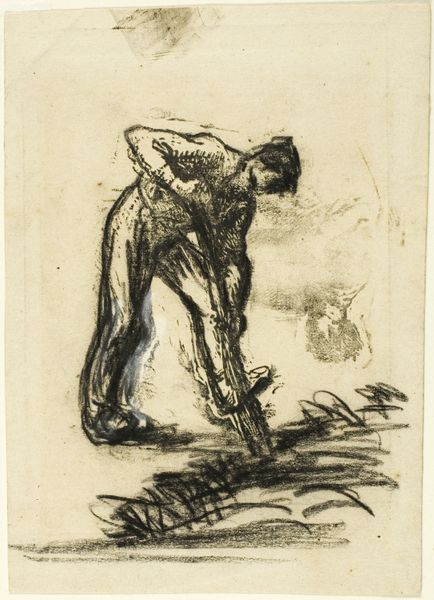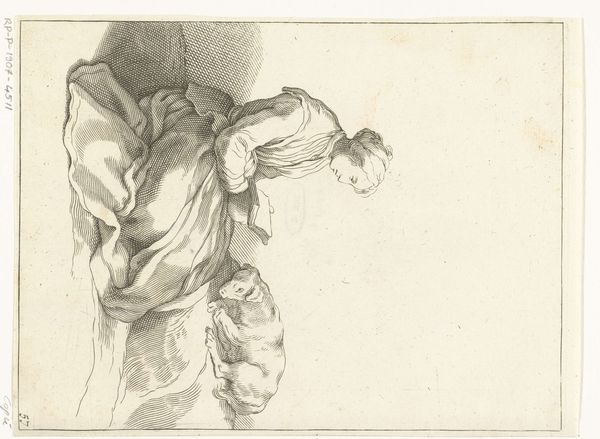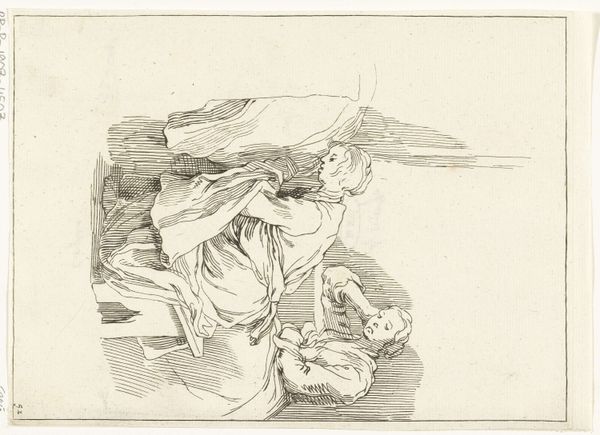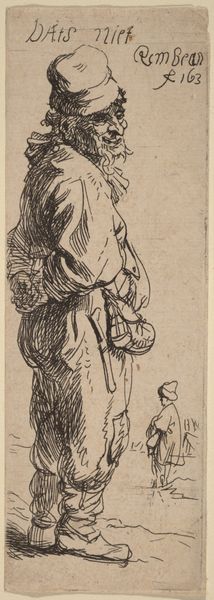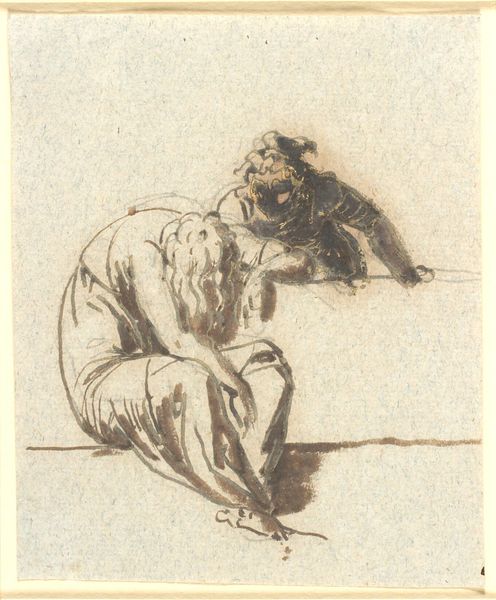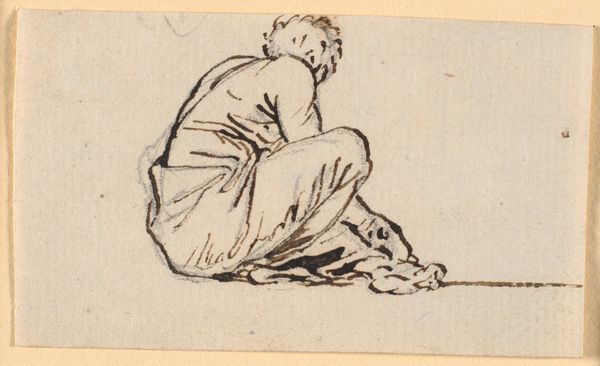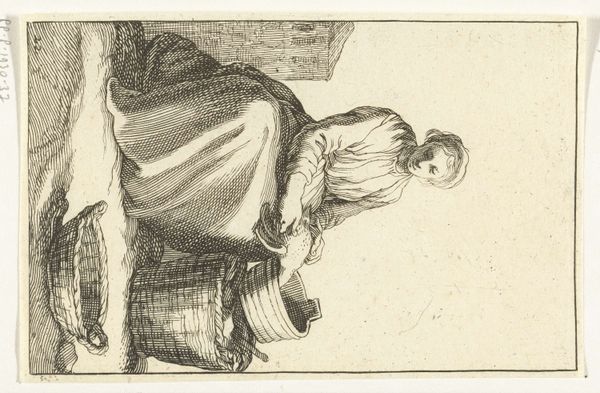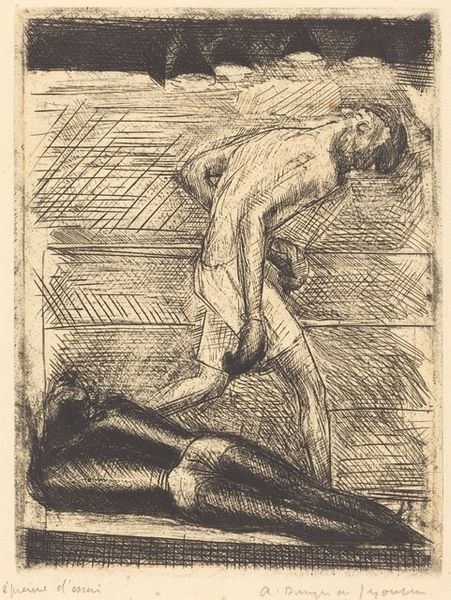
Udkast til moderens figur på: Der har du dine Øjne, sagde Døden... 1895
0:00
0:00
drawing, ink, pen
#
drawing
#
ink drawing
#
narrative-art
#
pen illustration
#
figuration
#
ink
#
symbolism
#
pen
Dimensions: 160 mm (height) x 201 mm (width) (bladmaal)
Curator: Wow, this Fritz Syberg piece, an ink drawing from 1895, has such a stark, haunting beauty to it. It's called "Udkast til moderens figur pa: Der har du dine Ojne, sagde Doden..." quite a mouthful. But, it feels appropriately weighty, given what it depicts. What catches your eye first? Editor: Definitely the dramatic foreshortening. That shrouded figure leaning, almost collapsing forward. There’s a density to it. The draped fabric especially; it speaks to loss, the way fabric so often does in symbolic art. Like a shroud already pulled across a memory. Curator: Syberg was deeply influenced by symbolism. This is actually a preparatory sketch for a larger, even more ambitious piece about death. But I find this simple study almost more affecting than the final painting. It's the rawness, the immediacy, right? Editor: Exactly. The stark ink, the scratchy lines. It communicates a visceral kind of grief, stripped bare. And what about that isolated shape, near the bottom, is it a detail of a garment? The part implies a larger absent body. It amplifies a sense of things torn asunder, dismembered by sorrow. Curator: Precisely! It could very well be an echo of the larger figure above, a haunting vestige, isolated in the composition as an orphaned detail... that is heartbreaking. It seems a perfect encapsulation of lingering anguish. Editor: Thinking about eyes from the full title... “There you have your Eyes, said Death...” I think about sight, loss, and knowing... what it means to suddenly lose clarity or the ability to witness. Curator: Absolutely. What does it mean when death bestows such a parting gift? In a sense, that absence, and recognition, becomes her inheritance and eternal curse. Thank you. I didn't quite have that angle until now. It really brings it into focus. Editor: I find with Symbolist works like this it’s essential to allow our immediate emotional response to take precedence. Lean into the feeling the piece evokes. The more layers of association then arise from that intuitive beginning, and guide us deeper into the work.
Comments
No comments
Be the first to comment and join the conversation on the ultimate creative platform.

